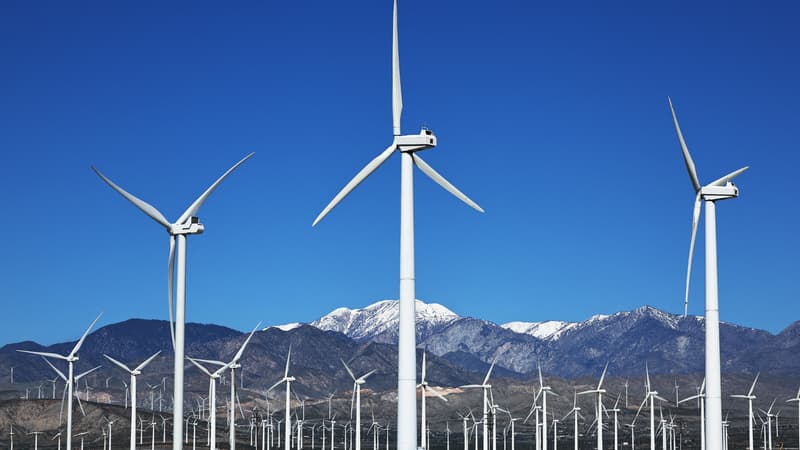Wind and solar overtook coal last year, but growth in renewables is slowing due to policy changes in the United States and China, leaving the COP28 goal of tripling global capacity by 2030 out of reach.
The International Energy Agency (IEA) still considered it possible last year to reach this goal, decided in the final agreement at COP28 in Dubai in 2023. But according to its latest annual report published on Tuesday, global energy capacity produced from solar, wind or hydropower should “reach 2.6 times its 2022 level by 2030.” This progression allows the share of renewable energies in global electricity to reach 34.3% in the first half of the year, thus surpassing that of coal, which fell to 33.1%, while gas stands at 23%, according to an independent report by the Ember think tank.
A global capacity of 4,600 gigawatts by 2030
But this growth is slowing and forecasts for renewable energy capacities “are 5% lower” than last year, “reflecting policy, regulatory and market changes from October 2024,” the IEA estimates.
Two main reasons for this, the agency points out: the early elimination of federal tax incentives in the United States, as well as other regulatory changes, which led the IEA to reduce its forecasts for the American market by almost 50% compared to last year. The second is China’s move from purchasing renewable electricity from regulated tariffs to an auction system, which “affects the profitability of the projects” and leads to a reduction in the country’s growth forecasts.
The IEA now projects an increase in global renewable energy capacity of 4,600 gigawatts (GW) by 2030, “roughly equivalent to the total production capacity of China, the European Union and Japan combined.” A year ago, it was still expected to almost triple with more than 5,500 GW of new capacity between 2024 and 2030.
However, the IEA emphasizes, “these adjustments are partly offset by the dynamism of other regions”, in particular India, Europe and most emerging and developing economies, where growth prospects are revised upwards. Geographically, China remains in the lead, but India “is on track to become the world’s second largest growth market for renewable energy”, with capacity that should multiply by 2.5 in five years.
In the European Union, forecasts are revised slightly upwards thanks in particular to Germany, Spain, Italy and Poland, while those for the Middle East and North Africa increase by 25%.
Fall in fossil imports
Solar PV alone will account for around 80% of the global increase in renewable capacity over the next five years, the IEA estimates, followed by wind, hydropower, bioenergy and geothermal. The latter is on track to reach “historic heights” in key markets, particularly the United States, Japan and Indonesia. Hydroelectricity should also be very popular due to the advantages it offers in balancing electrical grids, thanks to pumped energy transfer stations.
And despite supply chain problems, rising costs and permitting delays, global wind energy capacity is expected to nearly double by 2030, the agency adds. Offshore wind energy, on the other hand, sees its growth prospects decline compared to last year due to “policy changes in key markets”, particularly the United States, indicates the IEA.
Intermittent by nature, they are expected to produce almost 30% of the world’s electricity supply by 2030, twice as much as today. “Reduced (electricity) production and negative prices (when supply exceeds demand, editor’s note) indicate a lack of flexibility” while solutions exist, including smart chargers for electric vehicles, supply flexibility and electricity storage.
Source: BFM TV


